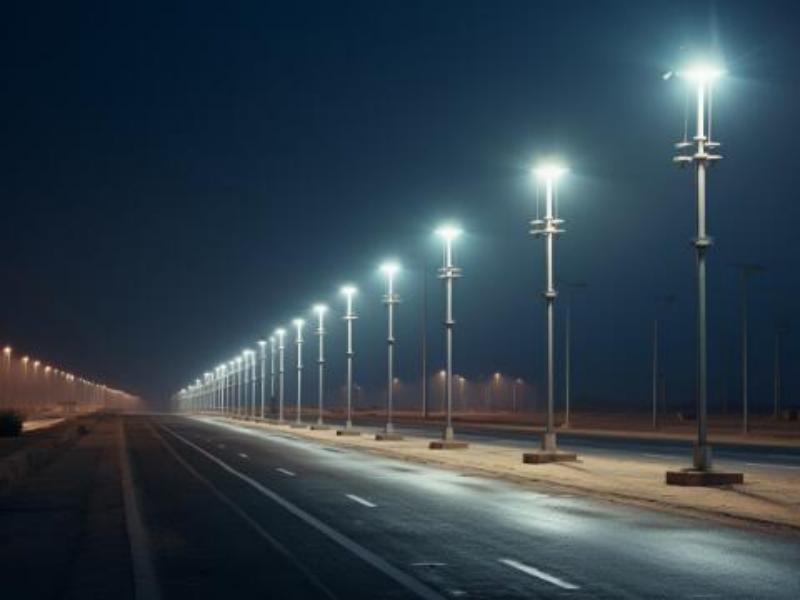Installing highway lamps is a very important task, which is directly related to the safety and traffic efficiency of the highway. In order to ensure the installation quality of highway lamps and improve the safety of driving at night, the following are some benefits of installing highway lamps and the specification requirements for highway lamps installation in highway projects.
Installing highway lamps can provide several benefits, including:
A. Improved visibility:
Highway lamps enhance visibility for drivers, especially during nighttime and adverse weather conditions, reducing the likelihood of accidents due to poor visibility.
B. Enhanced safety:
Properly lit highways can reduce the risk of collisions, improve reaction times, and enhance overall safety for drivers and pedestrians.
C. Reduced crime:
Well-lit highways can deter criminal activities such as vandalism, theft, and other illegal behavior, contributing to a safer environment for travelers.
D. Increased traffic flow:
Better visibility and improved safety can lead to smoother traffic flow and reduced congestion, especially during nighttime hours.
E. Support for economic activity:
Well-lit highways can support economic development by enabling safer and more efficient transportation of goods and people, promoting economic growth in affected regions.
F. Better navigation:
Highway lamps can aid drivers in navigating complex road systems, exits, and intersections, reducing the likelihood of confusion and missed turns.
Overall, the installation of highway lamps can significantly improve road safety, reduce accidents, and contribute to a more secure and efficient transportation system.
When installing highway lamps, there are several factors to consider for safety and effectiveness. Here are some things to pay attention to:
A. Positioning:
Ensure that the lamps are positioned in a way that provides adequate illumination of the highway without causing glare or shadows.
B. Height:
Install the lamps at an appropriate height to achieve the desired lighting coverage and to prevent interference with passing vehicles.
C. Spacing:
Properly space the lamps to ensure consistent and uniform lighting along the highway without gaps or overlaps.
D. Power supply:
Ensure that the lamps are properly connected to a reliable power supply to ensure consistent operation.
E. Quality of materials:
Use high-quality, durable materials for the lamp posts and fixtures to withstand exposure to weather and potential impacts.
F. Compliance with regulations:
Ensure that the installation complies with local regulations and standards for highway lighting to promote safety and minimize potential hazards.
G. Maintenance access:
Consider ease of access for maintenance and repair of the lamps to minimize disruption to highway traffic.
By paying attention to these factors, you can help ensure the effective and safe installation of highway lamps.
To sum up, the legal requirements for the installation of highway lamps in highway projects include paying attention to location, height, spacing, power supply, material quality, compliance with regulations, maintenance access, etc. It is required by regulations to install highway lamps in strict accordance with the regulations to ensure the safety and traffic of driving at night. Efficiency is a good service provided to the public and provides a good guarantee for the construction and use of road projects.
If you are interested in highway lighting, welcome to contact TIANXIANG to get a quote.
Post time: Jan-04-2024

